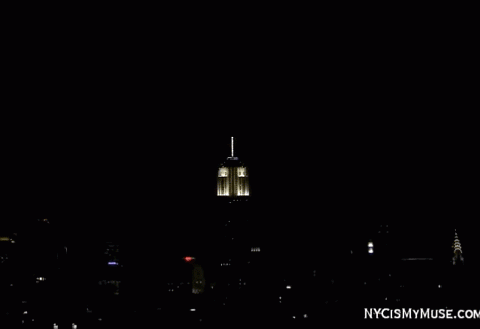Could Lasers Divert Lightning From Buildings?
They realized that for either the detection or lightning protection system to work, they’d need to overcome a major obstacle to firing high-intensity lasers into the atmosphere—such beams currently lose power after only a few inches because of atmospheric turbulence and water droplets suspended in air.
Their solution was to embed the high-intensity laser in the middle of a beam of lower intensity they call the dress beam. This creates a virtual filament in which the dress beam feeds power into the high-intensity center, helping it stay focused and overcome objects that would otherwise cause it to scatter. "Think of two airplanes flying together, a small fighter jet accompanied by a large tanker," said Maik Scheller, a University of Arizona assistant research professor of optical sciences, in a statement. “Just like the large plane refuels the fighter jet in flight and greatly extends its range, our primary, high-intensity laser pulse is accompanied by a second laser pulse -- the dress beam -- which provides a constant energy supply to compensate for the energy loss of the primary laser beam as it travels farther from its source.”
Their work, which was recently published in the journal Nature Photonics, extended the high-intensity laser’s range from 10 inches to seven feet in the lab. Using models to scale up their innovation, they believe they could extend it to 165 feet in real-world conditions.
(The top image shows the case of the intense central beam alone. The beam is focused and a short filament results and the plasma channel dissipates rapidly. In the bottom figure, the beam is accompanied by the dress beam. The filament and the plasma channel is extended manifold. Courtesy University of Arizona.)
Top Gif: ”I caught three direct strikes to the Empire State Building lightning rod after midnight on 4/13/11 during a severe thunderstorm,” wrote YouTube user ESBisMyMuse on the description accompanying this video. “I actually saw a fourth direct hit, but sadly wasn’t filming at the time. I’ve never seen so many hits on the ESB in one night.”
Michael Keller

